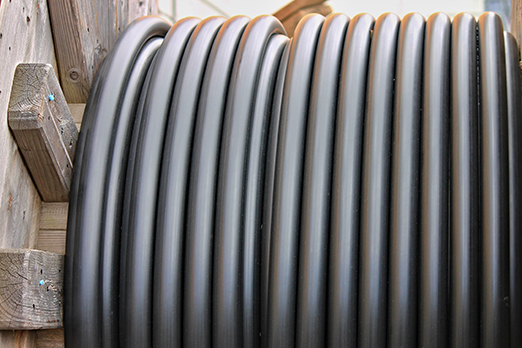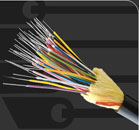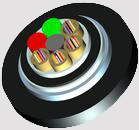PRODUCTS
- Aerial Bundled Cables
- Airport Cables
- Automotive Cables
- Alarm & Audio & Electronic Cables
- Belden Equivalent Cables
- Bus Cables
- Cable Glands
- Cables for Oil Industry
- Coaxial Cables
- Composite Cables
- Control Cables
- Data Cable
- Elevator Cables
- Fiber Optic Cables
- Fire Resisting Cable(Fireflix)
- Fire Retardant Cable(FIRETOX)
- Flame Retardant Cable (FIREGUARD)
- Flexible Cables
- Heat Detection Cables
- High Temperature Cables
- Highway Cables
- Industrial Cables
- Instrumentation Cables
- Lan Cables
- Marine Cable
- NEK606 Water Blocked Offshore & Marine Cables
- IEC60092 STANDARD Offshore & Marine Cables
- BS 6883&BS7917 STANDARD Offshore & Marine Cables
- UKOOA Offshore & Marine cables
- VG 95218 Navy Cables
- Mining Cables
- Airframe Wire
- Marine, OIL,GAS & Petrochemical Cables
- Power Cables
- Railway Cables
- Robotics
- Rolling Stock Cables
- Rubber & Crane Cables
- Security Cables
- Special Cables
- Spiral Cables
- Telephone Cables
- Thermocouple Cables
- BS 5308 Cable
- PAS 5308 Cable
- BS 5467 Cable
- BS 6724 Cable
- BS 6346 Cable
- BS 7211 Cable
- IEC 60502-1 Cable
HOT PRODUCTS
APPLICATIONS
![]() Cable Testing & Fire Resistant Cable
Cable Testing & Fire Resistant Cable
![]() Test Method for Fibre Optic Cables
Test Method for Fibre Optic Cables
Table-A.
| Testing Parameters | Parameter & Test Method Description | EIA/TIA-455 FOTP | IEC-607931 | ITU-T |
| Fiber Geometry | Fiber geometry is important where two fibers cores are to be joined together. Fiber geometry is measured to identify fiber mismatches which occur when manufacturer fails to maintain the optical and structural tolerances during the fiber fabrication process. Fiber mismatches will lead to fiber attenuation and intrinsic coupling loss. EIA/TIA 455-176 introduces method to measure all key parameters of fiber cross sectional geometry except core diameter. IEC-60793-1-20 describes four methods for measuring fiber geometry (namely refractive near field, transverse interference, near-field light distribution and mechanical diameter). The following parameters are measured: cladding diameter, cladding non circularity, core diameter, core non circularity and core cladding concentricity error and theoretical numerical aperture. IEC 60793-1-21 describes four methods for coating geometry of the fiber. The following parameters are measured: coating diameter, coating non-circularity and coating cladding concentricity error. | 176 | 20,21 | SM: G.650 Method 5.2.1 MM: G.651,Sec.1, Method B.3 |
| Spectral Attenuation | The reduction in signal strength is measured as attenuation. Attenuation is function of wavelength. TIA 455-78 describes a method for measuring the spectral attenuation of single mode fiber. TIA 455-46 describes a method for measuring the spectral attenuation of long length grade index multimode fiber. IEC 60793-1-40 describes four methods for measuring attenuation: (a) cut-back, (b) insertion loss, (c) backscattering (d) modelling spectral attenuation. | SM Fibers:78 MM Fibers:46 | 40 | SM: G.650 Method 5.4.1 MM: G.651,Sec.2,1, Method B.2 |
| Attenuation Uniformity (Point discontinuity) | The backscattering method adopted in IEC 60793-1-40 covers the location, loss and characterization of point discontinuity. This test is to monitor the change in optical transmittance of the fiber and cables arising from optical discontinuity. | 78 | 40 | SM: G.650 Method 5.4.2 MM: G.651,Sec.2, Method B.4 |
| Numerical Aperture (MMF) | The numerical aperture (NA) is a measurement of the ability of an optical fiber to capture light. TIA 455-177 is to determine the NA of near parabolic profile, graded index, glass core and glass clad optic fibers. NA is determined either from the fiber far field radiation pattern (Method A) or the fiber refractive index profile (Method B). IEC 60793-1-43 establishes requirement for measuring A1 graded index multimode fiber and its light gathering ability. The test is used to predict launching efficiency, joint loss at splices, and micro/macrobending performance | 177 | 43 | G.651,Sec.1, Method B.4 |
| Cutoff Wavelength (SMF) | The wavelength at which a mode stops to propagate is called cutoff wavelength for that mode; However, an optical fiber is always able to propagate at least one mode, the fundamental mode. The fundamental mode can never be cut off. The cufoff wavelength of a single mode fiber is the wavelength above which the fiber propagates only the fundamental mode Measuring the cutoff length involves comparing the transmitted Power from the test fiber with that of a reference fiber at different wavelength. TIA 455-80 & IEC 60793-1-44 provides methods for measuring the cut-off wavelength of single-mode optical fibers. The test method applies to sample fiber in either an uncabled condition or in a cable or as a jumper cable. | 80 | 44 | G.650, Methods5.3.1, 5.3.3 |
| Mode Field Diameter (SMF) | Not all light travels through the core of the fiber, but is distributed through both the core and the cladding. The "mode field" is the distribution of light through the core and cladding of a particular fiber. Mode-Field Diameter (MFD) defines the size of the power distribution. TIA/EIA 455-191establishes unifrom requirement for measuring MFD of fiber. Four methods are described in IEC 60793-1-45:a) direct far field scan b) variable aperture in the far field c) near field scan d) bidirectional backscattering using an ODTR. Mode field diameter is a key parameter because the radial extent of the mode can be used to predict losses at joints and microbends. In addition, if its spectral variation is known, it can be used to measure cut off wavelength. Other parameters which can be predicted using MFD data include waveguide dispersion and refractive index profile. | 191 | 45 | G.650, Methods5.1.2 |
| Bandwidth (MMF) | Bandwidth is generally the amount of data that can be carried from one point to another in a given time period. Bandwidth is measured by launching light into fiber from LED. With this type of light, all modes are filled and which is called overfilled launch. TIA/EIA 455-204 describes two methods for determining the transmission capacity for multimode fiber. IE 60793-1-41 describes two methods for measuring the modal bandwidth of multimode fiber. a) optical time domain measurement (pulse distortion) b) frequency domain measurement. Each method can be performed using one of the two launches: an overfilled launch (OFL) condition or a restricted mode launch (RML) condition. | 204 | 41 | G.651, Sec.3 Methods B2 G650 Method 5.5.1 |
| Chromatic Dispersion (SMF) | Chromatic dispersion occurs because different colors of light travels through the fiber at different speed. Some colors arrive at the fiber end before the others. This differential delay difference is called group delay which leads to pulse broadening. Chromatic dispersion is obtained by measuring this fiber group delay in the time domain. TIA455-175 use the differential phase shift method to determine the dispersion coefficient at a particular wavelength from the differential group delay between two closely spaced wavelength. IEC 60793-1 describes four methods for measuring chromatic dispersion: (a) phase shift, (b) spectral group delay in the time domain, (c) differential phase shift, and (d) interferometry. | 175 | 42 | G.650, Method 5.5.1 |
| Polarization Mode (PMD) | Polarization mode dispersion (PMD) is the average differential group delay (DGD) which is the time delay between two principle polarization modes of the transmission link at the receiver. PMD occurs when different planes of light inside a fiber travel at slightly different speeds, making it impossible to transmit data reliably at high speeds. PMD is the biggest challenge for high speed optic system. IEC 60793-1 describes three methods of measuring PMD of single mode fiber. TIA455-124 describes methods for measuring average PMD of SMF and cable assemblies over the measurement wavelength range of the selected source from 1210 nm and/or 1550 nm region. | 124 | 48 | G.650 Method 5.7.3 |
Table-B.
| Testing Parameters | Test Method Description | EIA/TIA-455 FOTP Number | IEC-794-1 |
| Tensile Load & Bending | Cable installed outside will be exposed to tensile load during installation and service. The cable should be able to withstand this force without fiber strain and attenuation change over its limit. | 33 | E1 |
| Low & High Temperature Bend | This test measures the ability of the cable to retain its mechanical and optical properties in spite of wide and rapid changes in temperature. | 37 | E11 |
| Compression loading (Crush) | The purpose of this test is to test the ability of the fiber to withstand transverse pressure. | 41 | E3 |
| Cyclic Impact | The fall of a heavy device is simulated in this test. The weight is allowed to fall vertically onto an intermediate steel piece that transmits the force to the cable sample. No damage to the cable sheath may occur. | 25 | E4 |
| Twist (Torsion) | During feeding, the fiber must withstand torsion forces in addition to tension, transverse pressure and bending load. Thus a cable sample is turned around its own axis and attenuation is measured during the test. Nether fiber or sheath material may be damaged during the test. | 85 | E7 |
| Cyclic Flexing (Repeated Bending) | The resistance of a fiber optic cable to repeated bending is determined by a cable sample bent forwards and backward 180 degree over a specific radius. | 104 | E6 |
| External freezing | This freezing test evaluates the ability of the fiber cable to withstand the freezing of the water that may immediately surround the cable. The test evaluates the physical appearance and mechanical properties of the jacket after test, monitoring the attenuation change during/after freezing. | 98 | F6 |
| Temperature Cycling | This test measures the effect of wide swing in temperature and humidity on the optical and mechanical performance of the cables.. Since the thermal coefficient of expansion of the plastic coating and buffer are different from the fibers themselves, microbending may occur with the temperature changes, and which may bring changes in attenuation. | 3 | F1 |
| Fiber Stripability | This test measures the forces required to remove the fiber coating. | 178 | B6 |
| Cable Aging | This test measures the effect of prolonged heat aging on the fiber. The accelerated oxygen test simulates the result of long term aging on the cable jacket. After test, the cable is examined for color changes, embrittlement, softening and surface damages etc. | 82 | F5 |
| Water Penetration | This test is to determine whether the interstices within the cable is continuously filled with jelly compound or water blocking to prevent water to enter the cable | 82 | F5 |
| Compound Flow (Drip) | This test is to determine whether the flooding compound will remain stable for ambient temperature up to 70deg and will not drip, flow or leak with age or at the change of temperature. No drip of the jelly compound may be observed during and after the test. | 81 | E14 |






